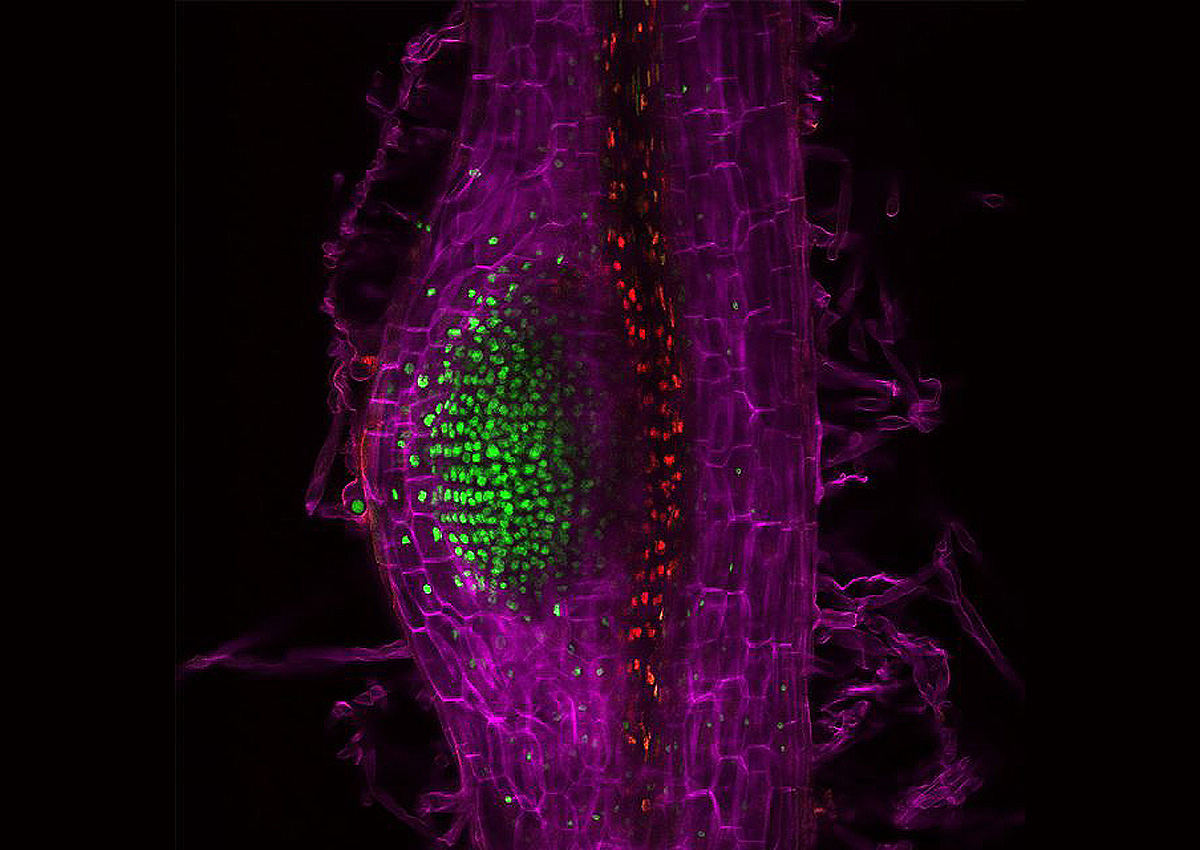
University of Florida Scientists One Step Closer Toward Crops That Make Own Nitrogen
February 2, 2022| |
Scientists at the University of Florida Institute of Food and Agricultural Sciences (UF/IFAS) are now one step closer to developing plants with the ability to harness nitrogen-fixing bacteria.
Nitrogen is essential to plants, but plants can only absorb it in some of its chemical forms. Some of these forms are naturally found in soils, but not in quantities needed to reach adequate crop yields. Nitrogen is plentiful in the air, but in a form that plants cannot use. Some bacteria that live in the soil convert atmospheric nitrogen in a form that plants can use in a process called nitrogen fixation. Some legumes have evolved root nodules that attract and host these bacteria. These nodules allow the plant to absorb the nitrogen the bacteria fix, and in exchange, the bacteria get sugars from the plant.
To understand the process when legumes come in contact with nitrogen-fixing microbes, the research team used a technique that causes fluorescence in the presence of cytokinin. This allowed them to the hormone's every move, and they found that cytokinin activity happens in two stages. During the first stage, cytokinin is produced in the outer layer of the root and moves inward. In the second stage, that inner part of the root pushes outward like a balloon, forming the nodule.
The researchers also found that the second stage of cytokinin activity is controlled by a gene called IPT3. This was confirmed through the fluorescence technique and by observing plants without the IPT3 gene. In the plants missing the gene, nodule formation did not occur, which tells the researchers that this gene plays a key role in the process.
For more details, read the article in UF/IFAS News.
| |
You might also like:
- Experts Find Genes Linked to Nitrogen Metabolism
- Scientists Find Molecule for Boosting Plant Growth With Less Nitrogen
- Pocket K No. 46: Nitrogen Use Efficient Biotech Crops
Biotech Updates is a weekly newsletter of ISAAA, a not-for-profit organization. It is distributed for free to over 22,000 subscribers worldwide to inform them about the key developments in biosciences, especially in biotechnology. Your support will help us in our mission to feed the world with knowledge. You can help by donating as little as $10.
-
See more articles:
-
News from Around the World
- IITA Scientists Identify Markers Associated with Resistance to Banana Weevil
- African Experts Underscore Importance of Youth Participation in Access and Benefit-sharing of Genetic Resources Negotiations
- US Backs Biotech Potato Research for Asia, Africa
- UMass Amherst Researchers Identify Genes for Flower Formation
- University of Florida Scientists One Step Closer Toward Crops That Make Own Nitrogen
- Argentina Updates its Regulatory Policies on Environmental Risk Assessment
- Australia's OGTR Releases Report on Herbicide Tolerance Review
- Researchers Use Wild Relatives to Breed Eggplants with New and Improved Traits
-
Research Highlights
- Transgenic Common Bean Lines Show Multiple Resistance to Three Viruses
-
Plant
- Report Explores Future Applications of Genomic Science
- Researchers Propose Framework for Classifying GMOs and Genome-edited Organisms
- Scientists Develop Shorter Canola to Minimize Lodging
-
Read the latest: - Biotech Updates (December 10, 2025)
- Gene Editing Supplement (November 26, 2025)
- Gene Drive Supplement (February 22, 2023)
-
Subscribe to BU: - Share
- Tweet

